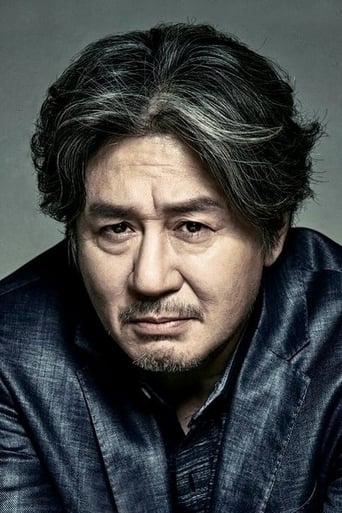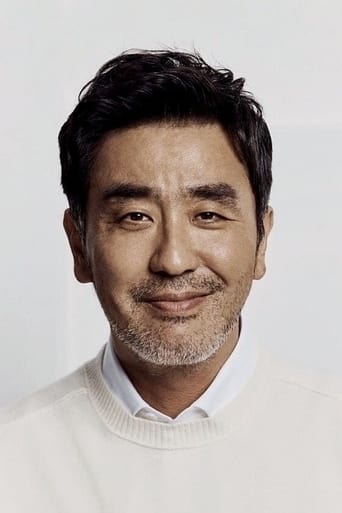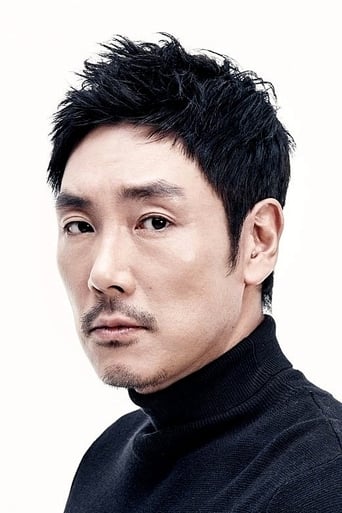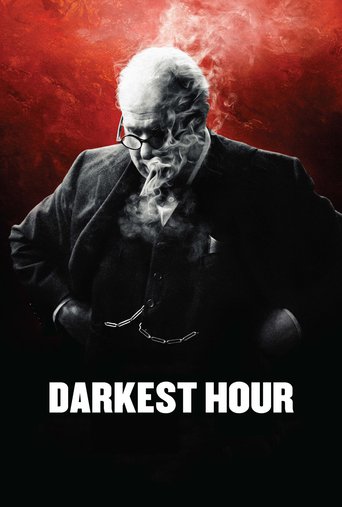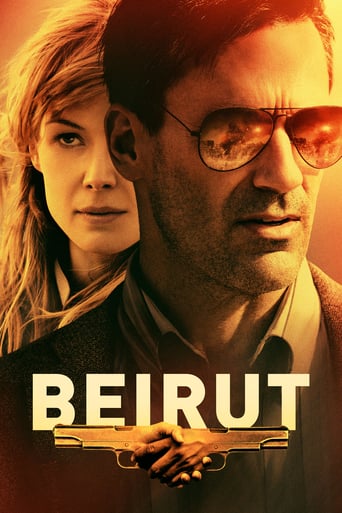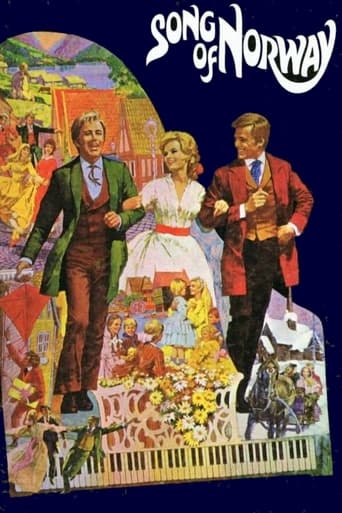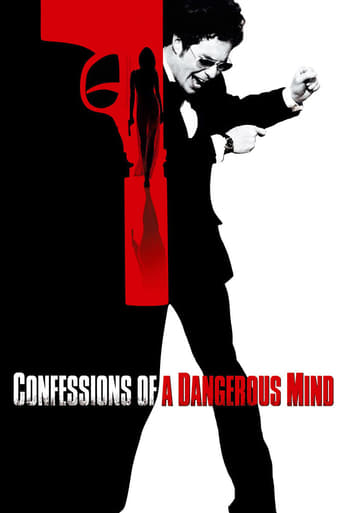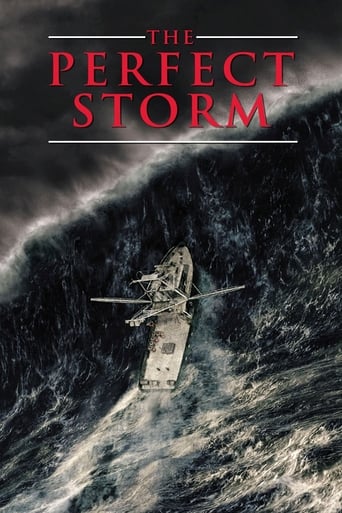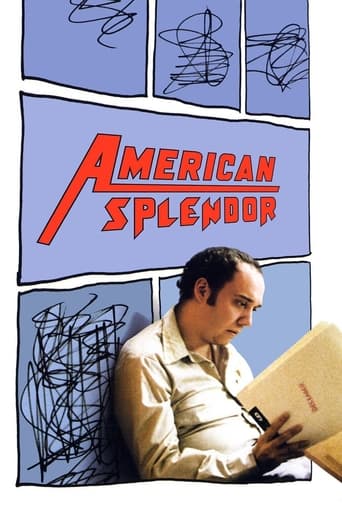
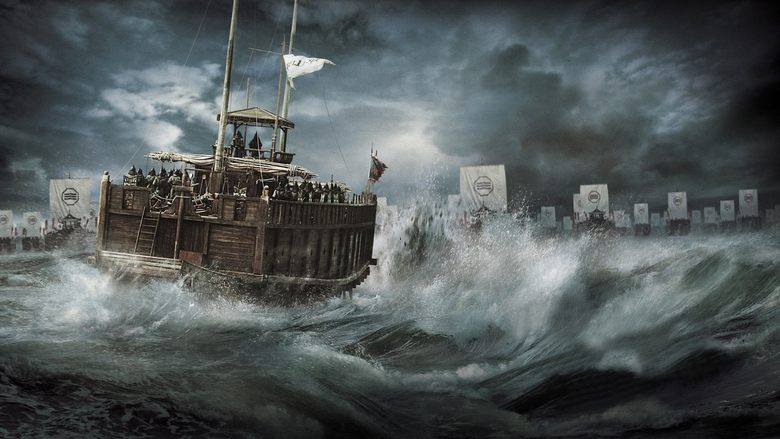
The Admiral: Roaring Currents (2014)
The film mainly follows the famous 1597 Battle of Myeongryang during the Japanese invasion of Korea 1592-1598, where the iconic Joseon admiral Yi Sun-sin managed to destroy a total of 133 Japanese warships with only 13 ships remaining in his command. The battle, which took place in the Myeongryang Strait off the southwest coast of the Korean Peninsula, is considered one of the greatest victories of Yi.
Watch Trailer
Cast


Similar titles
Reviews
The most impressive film I've seen in a long time! From beginning to end, the film is simply amazing and the action and excitement never ceases. The visuals are incredibly realistic. It is an incredible story of courage and determination, and how a handful of soldiers accomplished the impossible by defeating an army. The destruction of the enemy ships is so good, its mind blowing!! Simply awesome! One of my favorite films!
This great and exciting film (The Admiral - Roaring Currents, 2014) appears to be a spin off of, The Alamo (2004 film), about a United States, State of Texas, True battle against the Mexicans. You will notice many similarities between THE ALAMO and THE ADMIRAL. The Alamo film (2004) came first, but the writers of THE ADMIRAL film (2014) make us believe they were the originators of the plot by setting their film in 1597, whereas The Alamo is set in 1836.In both films you have the head military leader coughing up blood into a napkin. The Admiral does so (The Admiral), and Colonel Bowie does so (The Alamo).Also, the ratio of odds is exactly the same. The Alamo writers use 180 Texan troops fighting against 5000 Mexican troops. Whereas, The Admiral writers use 12 Korean ships against 330 Japanese ships. That is exactly the same odds ratio. EXAMPLE: 12 ships times 10 = 120 ships. 330 ships times 10 = 3300 ships. add half as many more and you get 180 ships against 4950 ships (sounds like 180 men against 5000 men).Either history repeats herself around the world or else these writers are deceiving us into thinking their plots are original?Consider the Israelite story of Moses, King Saul, and King David. Then consider the Roman/Greek story of the Emperor Nero. Nero's life was very similar to the combined lives of Moses/Saul/David.Davy Crockett's life can be compared to Jesus Christ in great detail. Davy was even purported to have risen from the dead and appeared to many in Mexico City after the fall of the Alamo (and his death). Davy bled the 5000 whereas Jesus fed the 5000. And so on.And COL Jim Bowie, COL Davy Crockett, and LT COL William Travis are considered the Holy Trinity of the Alamo.Perhaps the Admiral is Father, Son, and Holy Ghost all rolled up into one? Or should I add Moses too, making 4? We have to add in General Sam Houston into the mix to make a victory for the Texans. So perhaps the Admiral is: Moses, God, Jesus, Holy Spirit all rolled up into one, or Davy Crockett, Jim Bowie, William Travis, and Sam Houston all rolled up into one?
The highest domestic box office ever as well as internationally as a Korean movie. Based on the naval wars of Japanese invasion of Korea that took place in the last decade of the 1500s. The battle was fought for six long years, but this film focuses only the final one called 'Battle of Myeongnyang' in the year 1597. The famous face from the Korean filmdom, Choi Min-sik can be seen in the title role. For the international market, he was badly needed than the role wanted him. But I don't say that, he was amazing as always, like the character was specially created for him.As an important historical subject of the Korea, it was a very carefully made flick. But the product was more commercialised than being practical, especially in the battle scenes. You can't expect logic and accurate historical account, but entertainment is promised as the film's main intention. Awesome visuals, but as I said lacks the reality. Not a bad film either, because a very much acceptable for having interesting tiny bits in the battle. The first half was more a drama and as we are viewers, there is a chance to lose the focus. Barely generates any interest, kind of a setback to the movie. Not even the character constructive was handled that better in those sections where it should have been.Exactly after the first hour the pace picks up as the war commenced. Then it was a non-stop action, one must buckle up his seat belt for onwards to enjoy. Mostly never seen before style, because it was exhibited in the Korean style of a sea battle. It involves some kind of oceanography like the second half of the title say, 'Roaring Currents'. But not in a theoretical calculation rather a practical by observing the pattern and executing the plans like any old civilization was doing in any field. In one of the dialogue, the admiral uses the word 'virus' about fears spreading among his men. I don't think so the virus was discovered not before the late 19th century."Fear does not discriminate, it can equally affect our enemy."It may be a Korean answer to the '300: Rise of an Empire'. There are no similarities, one is a fictional war and the other one is a biographical war film, but deals on the same theme. Especially when the hundreds of soldiers fight against the thousands, definitely reminds '300'. Actually, it was 12 Korean warships against the 330 Japanese fleets. There are so many characters, the editing was much better to give space for everyone to show their parts in this 2 long hour run. The music was equally matched to the visuals. It includes some emotional segments too, but not the appealing one like you are going to have tears rather the narration demanded it and it worked.In the last two decades, Korean filmmakers going after the untouched territories and their success were inevitable. The quality of graphics in the world cinema is the revolution. Something is sure that now it does not belong to Hollywood alone. Because of this technology the world cinemas can compete with Hollywood. When I was a kid, my frequent question was 'why its so gloomy?'. The one thing I liked in this film was they were not afraid to create the battleground (atmosphere in the sea) in the daylight. You can see sunshine, shadows as well as gloomy as the clouds passing by. This film was a spectacular piece, that does not mean I said it a masterpiece. Like I always say, knowing/learning history through the films are easier than the textbooks. Hope there is a part 2, seems I want one.8/10
There were some mighty promises about The Admiral: Roaring Currents. Like, that it's some sort of Korean 300, based on a glorious page of their own history. A tale of 12 ships that opposed a Japanese fleet of more than 300 vessels and threw it back is definitely worth delving into, even if the modern cinematographic interpretation did it as little justice as Zack Snyder's gore-praising action did to the Ancient Greek legend.Well, from the very beginning it was obvious that we're not gonna get the same sort of action from The Admiral. The budget of the Korean film was noticeably thinner than one of the Hollywood blockbuster, for which it tried to compensate with a typical Eastern dramatic approach: lots of close-ups of faces lit with such intense emotions it seemed the people whose faces belonged to could explode from within any second. Add some really bravado, albeit pretty generic, music to the mix, and you get a recipe for a Middle Age Oriental Molotov cocktail that can't wait to go boom.Despite this rather pompous premise, the first act of The Admiral is indeed very promising. Every single aspect of the story is telling us that the remainder of the Korean fleet simply stands no chance. The morals of the troops are below the waterline, with the most pressing dilemma being suicide vs treachery. The main hero is old, his health ailing and even his closest aides have no slightest faith in their mission's success.At some point you start getting restless to finally have a glimpse of any silver lining at all, because the film doesn't even try to speak riddles to you and make you believe it has something major up its sleeve. So, except some pretty watered-down and vague hints, you're left with nothing to expect. Which is a bit disappointing, because, without any promises of a tour de force by a tactical genius, one usually has to brace himself for a showcase of deus-ex-machinas coming up one after another.Unfortunately, when the action starts, the worst fears come true. You might be hoping to see something very cunning, borderline diabolical, which would explain how that measly fleet of 12 ships could pull a trick the history tells it did. Well, don't hope for too much. Because what you'll see will make Pirates of the Caribbean an apex of naval tactics in comparison. In other words, "they shoot and miss, we shoot and hit hard", accompanied with the same old close-ups of the Admiral, who seemingly manages to blow up enemy ships and pump strength into his men by willpower alone.One could hope that it's gonna get better after the first tide of ridiculousness goes down. On the contrary. If at first the film was at least trying to explain its strategic thinking, no matter how insane, then after a certain point it all goes haywire. It's impossible to understand what is going on and why the characters do what they do, but clearly the Koreans have some sort of collective enlightenment channeled from up above, because no matter what the Japanese troops do, they fail at sinking a single enemy ship, while their ranks recede with a terrifying pace. And even the dramatic flashbacks of the Admiral sharing some obscure pieces of war wisdom can't possibly explain this miracle.The anticlimactic finale of this story that was planned as a suicide mission all along tries to distract the viewer's attention from its utter implausibility by throwing in some social message and underlining the importance of the common people. But no matter how hard those common people bow into the camera, they fail to make up for what was supposed to be a really gritty tale of a dramatic moment in the national history of Korea, but instead ended up a pretty cheap and plain B-movie about costumed men muddying the waters with very tense and heroic faces.


